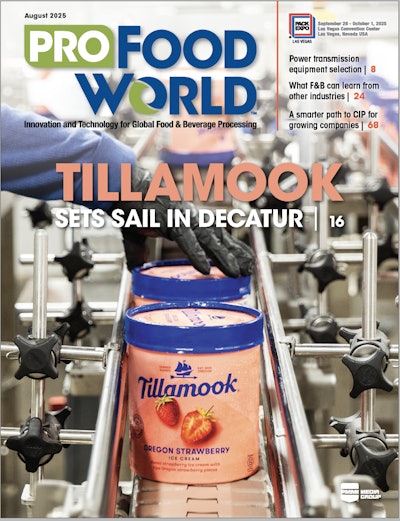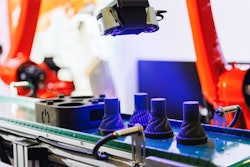In what could be a first step toward modernizing the glass industry with help from the U.S. government, representatives of glass companies met with the U.S. Dept. of Energy's Office of Industrial Technology in Washington, DC, in February. Glass manufacturing is one of seven U.S. industries now working with the Dept. of Energy (DOE) to help develop an industry "vision" for the future, says Denise Swink, deputy assistant secretary of the Office of Industrial Technologies (OIT). At the two-day workshop, glassmakers, public agencies and the research community discussed how to create a blueprint for future research and technology, called Technology Vision and Research Agenda for America's Glass Industry. The document will help to prioritize research and development over the next 20 years, Swink says. "DOE. . . plans to invest in activities that match government's objectives for energy efficiency and environmental performance. We hope to fill in the gaps, helping the glass industry to achieve its vision." Philip Ross, a consultant who contributed to the original draft of that document, set out to define the industry. U.S. glassmakers produced products valued in excess of $15 billion in '91 and employed 120ꯠ workers. "Although glass is an energy intensive industry, significant progress has been made in reducing the amount of energy required to manufacture glass products," he said. "For example, many products are recycled to protect the environment and conserve energy." As stilted and bureaucratic as the title for that document sounds, some of the discussion was decidedly more specific and practical. James R. Malone, president and CEO of Anchor Glass Container Corp. (Tampa, FL), a unit of Vitro in Mexico, offered a far more provocative assessment of what's needed to make glass a more valuable participant in the packaging arena. Malone grew up in the glass business, although today he's actually a relative newcomer to glass company management. Thus he enjoys the freedom to question what has always been considered the tried and true ways of doing business. "The fact of the matter is the way things have always been done when it comes to research and development in the glass industry have not amounted to much," he pointed out. "The facts are that we are shrinking a commodity that has huge economic and environmental benefits." He underscored the need for the workshop, the fact that the glass container industry is in the midst of a long-term crisis. In glass container manufacturing, he explained that 72 plants in the U.S. employ some 40ꯠ people. He updated those recent figures by noting that Anchor Glass Container closed two glass plants the previous week. Economics were the factor, he said. Had the workshop been held in the '80s, the plant closings could have been attributed to lost market share, primarily to lightweight plastics and other package forms. In the '90s, though, glass containers are enjoying increased market share, thanks to new products and a growing public awareness of the advantages of glass. Given these pluses, he said the problem in glass container making is productivity. Or to put it another way, manufacturing costs. With much of American manufacturing showing improved productivity, Malone wonders why the glass industry is lagging. "The answer is fairly plain and simple: research and development energy and dollars have not been used wisely. Or worse, used not at all," he reports.
What ails the glass container industry?
That may not have been the question posed in a recent Dept. of Energy/U.S. glassmakers workshop on technology. But Anchor Glass' James Malone tried to answer it.
Mar 31, 1995
Companies in this article
Proteins Innovations Report
Discover cutting-edge protein packaging innovations from PACK EXPO International 2024! Our editorial team spotlights hygienic equipment and materials designed for the demanding protein sector. From IP66-rated washdown systems and all-servo chub packaging to advanced auto-bagging technology and compostable trays replacing EPS, this report reveals how manufacturers are addressing clean, safe design while improving efficiency.
Take Me There
Researched List: Engineering Services Firms
Looking for engineering services? Our curated list features 100+ companies specializing in civil, process, structural, and electrical engineering. Many also offer construction, design, and architecture services. Download to access company names, markets served, key services, contact information, and more!
Download Now
















